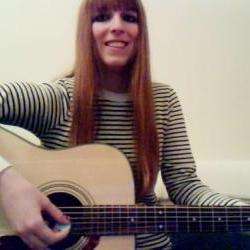Amid a hurricane of clashing out-of-sync metronomes, frenetic choreography, African drumming, brass glissandi, and sound-making contraptions made of broken bicycles and megaphones – all of which comprise William Kentridge’s chamber opera Refuse the Hour – emerged a lucid meditation on temporality. Weaving together themes of rhythm, repetition, pulse, duration, space, and physics, Mr Kentridge used the concept of time as a springboard for explorations of his ideologies, both political and performative. Although at times straying on the side of self-indulgence, the lively performance captured Kentridge’s string of temporal theories in less than an hour and a half. The seemingly disparate elements of speech, song, instrumental music, dance, film, and machines, clashing and overlapping (not to mention distorting our sense of time) with contributions from too many figures to list here, ultimately synced together into an exhilarating exhalation of sorts.
Refuse the Hour was experienced linearly, yet I am remembering it in stacks and shards of singular moments. During one, Mr Kentridge read aloud from his libretto while standing on a circular rotating platform in the corner of the stage; in a video projected onto the wall behind him, an identically-dressed virtual version of himself was walking along, stepping over chairs that appeared in his path; on the middle of the stage, dancer/choreographer Dada Masilo performed an elaborate dance around and on top of identical chairs; on the far side of the stage, a violin played by Waldo Alexander sang a simple tune. In another, Ms Masilo stood on the rotating circular platform, her arms and legs clad in Mr Kentridge’s signature megaphones, contorting her body to the rhythms of prerecorded accordion music. And in another (perhaps the most impressive vignette of the evening), various noisemaking contraptions (including megaphones rigged up to disassembled bicycles) churned out sonic patterns before an aria was sung stunningly from an upper balcony by Ann Masina. (She was eventually joined in a bickering match of quibbling timbres and tempi by Joanna Dudley from the stage.)
Mr Kentridge’s musing on time played out through videos (which he co-designed with Catherine Meyburgh) and choreography (which was at its strongest when it played on the themes of mimicry and repetition), dramaturgy by Peter Galison, and of course Mr Kentridge’s own theatrical antics (attempting to conduct/choreograph his fellow performers but getting shoved aside; mocking his own monologues and dramatic efforts; holding his breath until he turned purple). These antics took place within a stage cluttered with sound-making and time- keeping devices, including drums hanging from the ceiling which periodically got played by invisible forces – one of many endearing features of Sabine Theunissen’s scenic design and machine design by Christoff Wolmarans, Louis Olivier, and Jonas Lundquist. The only weak aspect of the production was Philip Miller’s music, which felt like a knockoff of a Philip Glass soundtrack (particularly during the last few scenes, with their whimsically whirling minor arpeggios). However, the musicians, led by conductor, co-orchestrator, trumpeter, and flugel hornist Adam Howard, were consistently energetic and precise in their delivery of trombone glissandi, tuba wails, melodica melodies, African chants and beats, and the occasional meter war with the out-of-sync metronomes clicking away across the stage.
Another moment imprinted on my memory is the final scene, a concluding sequence of sounds and images following a monologue on black holes wraps up Mr Kentridge’s series of rants on time: the Perseus myth and his childhood frustrations with it, the troubling concept of existing “in time” or “out of time”, the transmission of ourselves and of traces of ourselves through sound and movement, the nature of movement itself (“time is distance, but it is also geography”). Mr Kentridge’s thoughts were quickly swept away by the stuttering of a marching band of sorts. The performers were processing towards the audience and propelling a jaunty cacophony up and out as another sort of procession, emaciated and silent, (seemingly a somewhat jarring incorporation of Mr Kentridge’s anti-Apartheid sentiments) proceeded across the back of the stage behind them. These sorts of interjections (including the recurring motifs of Mr Kentridge’s autobiographical anecdotes, artistic frustrations, and personal politics) felt cumbersome alongside mathematical formulae and principles of relativity.
Although the monologues at times came across as somewhat pretentious, the integration of new layers of sound and of understanding, along with the continued emphasis on timbre as a means for achieving different levels of awareness of temporality, should surely be applauded. Indeed, Mr Kentridge himself acknowledged in the program notes that the project was somewhat haphazard in its genesis and eventual execution (“there was more team than project, and the project filled the gaps”). Perhaps he would be comforted by the words of Henri Bergson (who surely would have delighted in the production): “The idea of the future, pregnant with an infinity of possibilities, is thus more fruitful than the future itself, and this is why we find more charm in hope than in possession, in dreams than in reality.”


